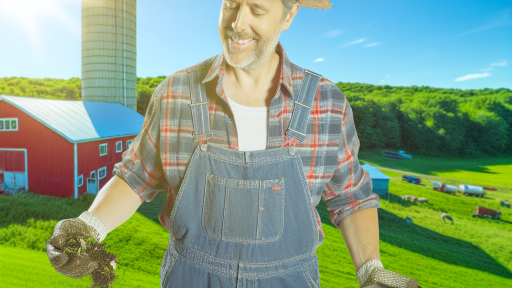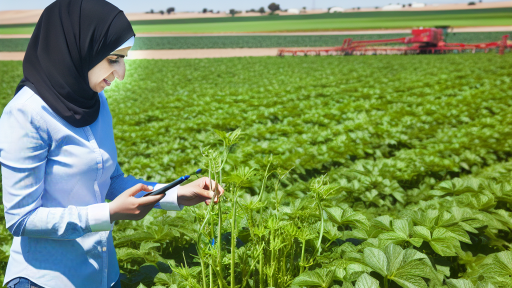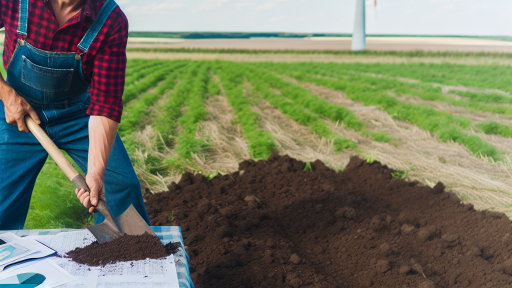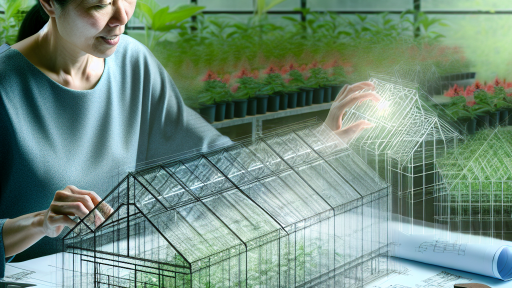Introduction to Conservation Tillage
Definition of Conservation Tillage
Conservation tillage is a farming practice that reduces soil disturbance.
This technique involves minimal tilling of the soil.
Farmers leave a significant amount of crop residue on the surface.
This practice helps to protect the soil from erosion.
Importance of Conservation Tillage
Conservation tillage plays a vital role in soil health.
It improves organic matter and soil structure over time.
Additionally, it enhances water retention in the soil.
Farmers can experience reduced irrigation costs due to this moisture conservation.
Moreover, this method helps to decrease reliance on chemical fertilizers.
It allows for natural nutrient cycling within the soil ecosystem.
Environmental Benefits
Conservation tillage contributes to environmental sustainability.
It helps in reducing greenhouse gas emissions through carbon sequestration.
Healthy soils can store more carbon, which is beneficial for the climate.
This practice supports biodiversity by creating habitats for various organisms.
Economic Advantages
Farmers can save money on fuel and equipment costs.
Transform Your Agribusiness
Unlock your farm's potential with expert advice tailored to your needs. Get actionable steps that drive real results.
Get StartedLess intensive tillage requires fewer resources and time.
In the long run, reduced soil erosion translates into higher yields.
This method is increasingly recognized by agricultural incentives and grants.
Challenges and Considerations
Transitioning to conservation tillage can present challenges.
Farmers may need time to adjust their practices and mindsets.
Educating oneself about the new methods is crucial for success.
Additionally, regional soil and weather conditions may require adaptations.
Benefits of Conservation Tillage for Soil Health and Sustainability
Enhancing Soil Structure
Conservation tillage improves soil structure significantly.
It creates stable aggregates that enhance soil porosity.
This porosity allows roots to penetrate more easily.
Consequently, water infiltration rates increase.
Reducing Soil Erosion
Using conservation tillage helps reduce soil erosion.
It preserves the topsoil, which is crucial for crop growth.
Additionally, reduced erosion leads to less sediment in waterways.
Both the land and rivers benefit from this practice.
Enhancing Soil Fertility
One major benefit of conservation tillage is enhanced soil fertility.
The practice increases organic matter in the soil.
As a result, beneficial microbes thrive and contribute to nutrient cycling.
This increased organic matter also improves moisture retention.
Supporting Biodiversity
Conservation tillage promotes greater biodiversity.
It allows for a diverse range of plants and organisms to flourish.
Healthy ecosystems emerge in fields that practice conservation tillage.
This diversity aids in pest control naturally.
Boosting Crop Yields
Farmers often experience increased crop yields with conservation tillage.
Showcase Your Farming Business
Publish your professional farming services profile on our blog for a one-time fee of $200 and reach a dedicated audience of farmers and agribusiness owners.
Publish Your ProfileThe practice fosters healthier crops due to improved soil conditions.
Healthy soil ultimately results in stronger, more resilient plants.
This resilience leads to better yields during adverse conditions.
Conserving Water
Conservation tillage is effective in water conservation.
The increased organic matter helps retain moisture in the soil.
This retention reduces the need for irrigation.
Farmers can save water while still promoting healthy crops.
Mitigating Climate Change
This practice helps in mitigating climate change effects.
By storing carbon in the soil, conservation tillage reduces greenhouse gases.
Moreover, less tillage decreases fuel consumption during farming operations.
Both factors contribute positively to environmental sustainability.
Types of Conservation Tillage
No-Till Farming
No-till farming eliminates the need for traditional plowing.
Instead, farmers use specialized machinery to plant seeds directly into undisturbed soil.
This technique conserves soil moisture and enhances soil structure.
Additionally, it reduces soil erosion significantly.
Farmers practicing no-till also see increased earthworm populations.
Moreover, this method promotes better water infiltration.
Reduced-Till Farming
Reduced-till farming involves minimal soil disturbance.
Farmers only till the soil when necessary for seedbed preparation.
This technique still preserves some of the soil structure.
It limits the negative impacts of frequent tillage on soil health.
Vegetation cover remains intact, protecting the soil surface.
As a result, reduced-till farming improves overall soil fertility.
Strip-Till Farming
Strip-till farming combines elements of both no-till and reduced-till methods.
In this approach, farmers till narrow strips of soil where seeds will be planted.
Consequently, the rest of the field remains undisturbed.
This practice allows for easy planting while preserving soil health.
Strip-till also reduces erosion and moisture loss.
It provides a beneficial balance between tilled and untilled land.
Explore Further: Sustainable Farming: Crop Rotation Best Practices
How to Transition from Conventional Tillage to Conservation Tillage
Understanding the Basics
Conventional tillage involves frequent soil disturbance.
It can lead to soil erosion and nutrient loss.
In contrast, conservation tillage preserves soil structure.
This method enhances moisture retention and promotes biodiversity.
Assessing Your Current Practices
Begin by evaluating your existing tillage methods.
Identify the types of equipment you use regularly.
Next, consider the impact of these practices on your soil health.
Gather data on soil erosion, compaction, and nutrient levels.
Setting Clear Goals
Define your objectives for making the transition.
Are you aiming to improve yields or reduce costs?
Showcase Your Farming Business
Publish your professional farming services profile on our blog for a one-time fee of $200 and reach a dedicated audience of farmers and agribusiness owners.
Publish Your ProfileEstablish specific, measurable, and achievable goals.
For example, you might want to reduce erosion by a certain percentage.
Choosing the Right Equipment
Implementing conservation tillage may require new tools.
Invest in no-till or reduced-till equipment.
Consult with agricultural suppliers for recommendations.
Research various brands and models that suit your needs.
Planning Your Crop Rotation
Create a diverse crop rotation plan to improve soil health.
Incorporate cover crops between planting seasons.
This practice enhances soil organic matter and fertility.
Consider planting legumes to fix nitrogen in the soil.
Gradually Implementing Changes
Begin the transition with small changes to your operations.
For example, you can reduce tillage depth gradually.
Monitor the effects of each change along the way.
Adjust your methods based on the results you observe.
Educating Your Team
Organize training for your farming team on conservation techniques.
Share the benefits of conservation tillage with all staff members.
Encourage open discussions about challenges and solutions.
Utilize online resources and workshops for additional education.
Measuring Success
Monitor the outcomes of your transition regularly.
Track soil health, crop yields, and overall farm productivity.
Adjust your practices based on what works best.
Celebrate milestones to keep motivation high within your team.
Discover More: Implementing Agroforestry for Farm Diversity
Essential Equipment for Implementing Conservation Tillage Practices
Understanding the Basics
Conservation tillage requires specific equipment to optimize efficiency.
Each tool serves a unique purpose in this sustainable farming practice.
Understanding this equipment is crucial for beginner farmers.
Essential Tools for Conservation Tillage
Start with a no-till drill to plant seeds directly into undisturbed soil.
This tool reduces soil erosion and maintains moisture levels.
Next, consider a chisel plow for minimal disturbance of the soil surface.
This equipment is effective in breaking up compacted layers.
Additionally, a mulcher helps manage crop residue effectively.
It cuts and spreads leftover plant material uniformly across the field.
Benefits of Specialized Equipment
Using the right tools enhances soil health and productivity.
Conservation tillage equipment helps retain nutrients in the soil.
Moreover, it supports improved water absorption and root development.
Additional Equipment Considerations
- Rolling cutters can help manage cover crops effectively.
- Weed wipers assist in minimizing chemical usage by targeting weeds.
- Sprayers designed for conservation tillage reduce environmental impact.
Investing in high-quality equipment is essential for successful implementation.
Evaluate your farm’s specific needs before making a purchase.
Learn More: Nutrient Cycling For Soil Health Improvement
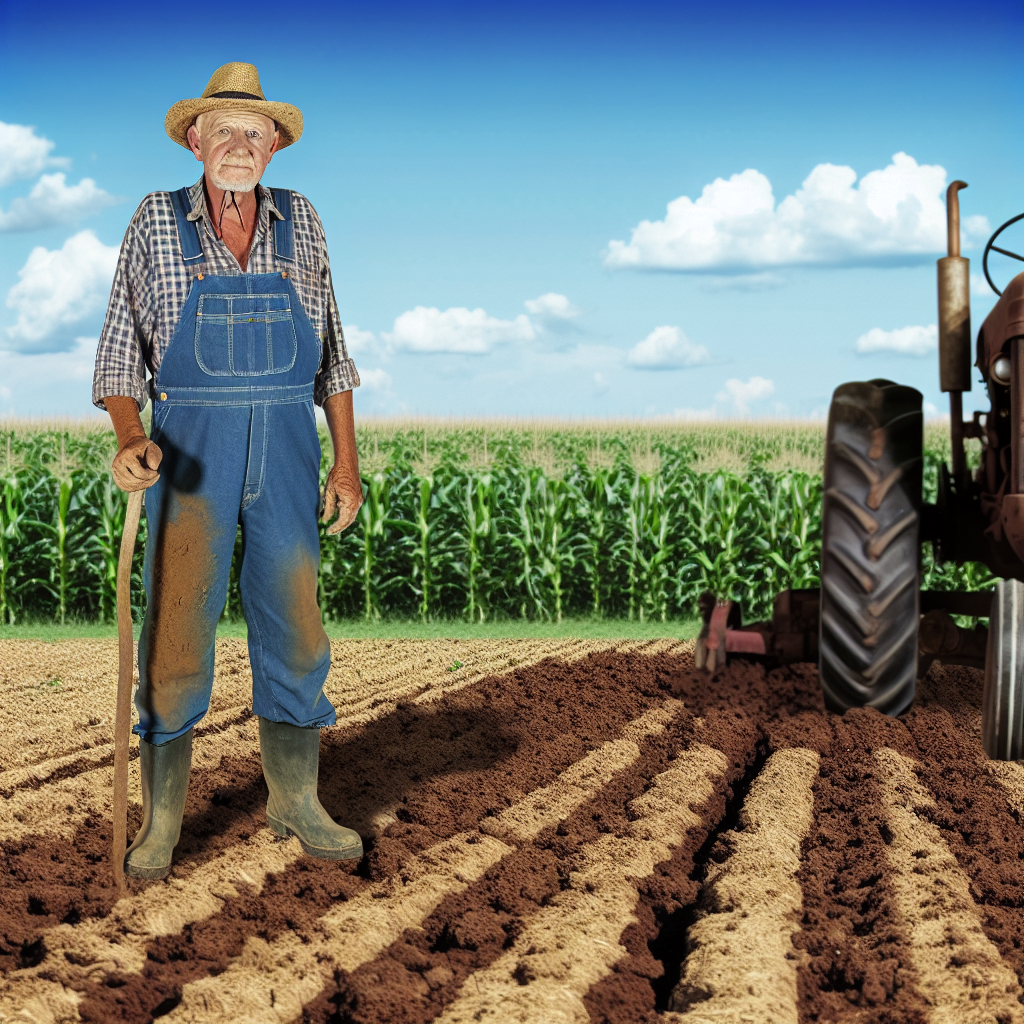
Common Challenges and Solutions in Conservation Tillage
Understanding the Challenges
Farmers often face various challenges when implementing conservation tillage.
Soil compaction can hinder root growth and water absorption.
Showcase Your Farming Business
Publish your professional farming services profile on our blog for a one-time fee of $200 and reach a dedicated audience of farmers and agribusiness owners.
Publish Your ProfileAdditionally, farmers may struggle with weed management techniques.
Inconsistent residue coverage can lead to uneven soil temperature.
These issues can affect crop yields significantly.
Overcoming Soil Compaction
Soil compaction is a prominent issue for many farmers.
To address this, farmers should consider using cover crops.
Cover crops help improve soil structure and aeration.
Rotating with deep-rooted plants also encourages soil loosening.
Regular testing can help monitor soil health levels.
Effective Weed Management
Weed control poses a major challenge in conservation tillage.
Farmers can implement integrated weed management strategies.
Mechanical weeding is one effective approach to consider.
Utilizing mulches can also suppress weed growth effectively.
Moreover, timing herbicide applications is crucial for effectiveness.
Improving Residue Management
Inconsistent residue coverage can affect soil temperature and moisture.
Farmers can benefit from adjusting their equipment settings.
Ensuring that residue spreads evenly can improve evenness.
Additionally, utilizing chop-and-drop techniques can enhance coverage.
Regular maintenance of tillage equipment can prevent buildup issues.
Monitoring and Adapting Practices
Farmers should consistently monitor their conservation tillage practices.
Using data collection tools can provide valuable insights.
These insights allow for fine-tuning of practices based on conditions.
Flexibility in methods can lead to improved outcomes over time.
Sharing experiences with local farming groups can also be beneficial.
Uncover the Details: Integrating Hydroponics for Water-Efficient Farming
Best Crop Rotations and Planting Strategies for Conservation Tillage
Understanding Crop Rotation
Crop rotation involves alternating different crops in a specific sequence.
This practice enhances soil health and reduces pests.
For instance, rotating legumes with cereals improves nitrogen levels.
Effective Crop Rotation Plans
A successful crop rotation plan considers local climate and soil conditions.
Integrating cover crops can enhance soil structure and nutrient levels.
- Utilize legumes to fix nitrogen in the soil.
- Incorporate deep-rooted crops to improve soil aeration.
- Apply small grains to suppress weed growth and enhance soil fertility.
Utilizing Cover Crops
Cover crops provide numerous benefits during the off-season.
They prevent soil erosion and improve water retention.
Additionally, cover crops can suppress weeds naturally.
Planting Strategies for Conservation Tillage
Using appropriate planting techniques boosts yields in conservation tillage systems.
Aim for direct seeding or no-till planting to protect soil structure.
These methods minimize soil disturbance and enhance moisture conservation.
Choosing the Right Timing
Timely planting is crucial for optimizing crop growth.
Consider local frost dates and moisture conditions before planting.
This ensures crops establish well and compete against weeds effectively.
Integrating Diverse Crops
Diversity in crop selection supports ecosystem balance.
It also helps mitigate disease and pest problems.
Showcase Your Farming Business
Publish your professional farming services profile on our blog for a one-time fee of $200 and reach a dedicated audience of farmers and agribusiness owners.
Publish Your Profile- Combine grains with pulses for better soil nutrition.
- Include flowering plants to attract pollinators.
- Utilize root vegetables to break compaction layers in soil.
Case Studies: Success Stories of Farmers Using Conservation Tillage
A Transition to Conservation Tillage
Maria Gonzalez, a farmer in Nebraska, switched to conservation tillage in 2018.
Her soil health improved dramatically within a year.
She noticed an increase in earthworm populations and soil moisture retention.
Additionally, her yield of corn improved by 15 percent after adopting this method.
Maria’s success inspired nearby farmers to experiment with conservation practices.
Improving Resilience with No-Till Farming
John Roberts implemented no-till farming on his family farm in Iowa.
He faced frequent droughts but saw a difference after two growing seasons.
No-till farming helped his soil retain moisture and improved crop resilience.
This shift reduced his irrigation needs significantly, saving him money.
His neighbors began to ask about his methods, eager to learn more.
Increasing Profitability through Soil Health
Linda Carter, located in Indiana, adopted conservation tillage in 2019.
She focused on cover crops to enhance soil health throughout the winter.
This strategy boosted her soybean production by 20 percent within two years.
Linda reported lower input costs due to healthier soil and reduced erosion.
Her farm has become a model for sustainable practices in her community.
Collaboration for Sustainable Practices
The Green Valley Cooperative established a conservation tillage program for its members.
Farmers shared resources and information about best practices.
This collaboration enhanced the overall efficacy of conservation tillage techniques.
Members experienced better yields and improved environmental stewardship as a result.
The cooperative’s success highlights the importance of community in sustainable agriculture.
Additional Resources
Understanding why farmers adopt soil conservation tillage: A …

